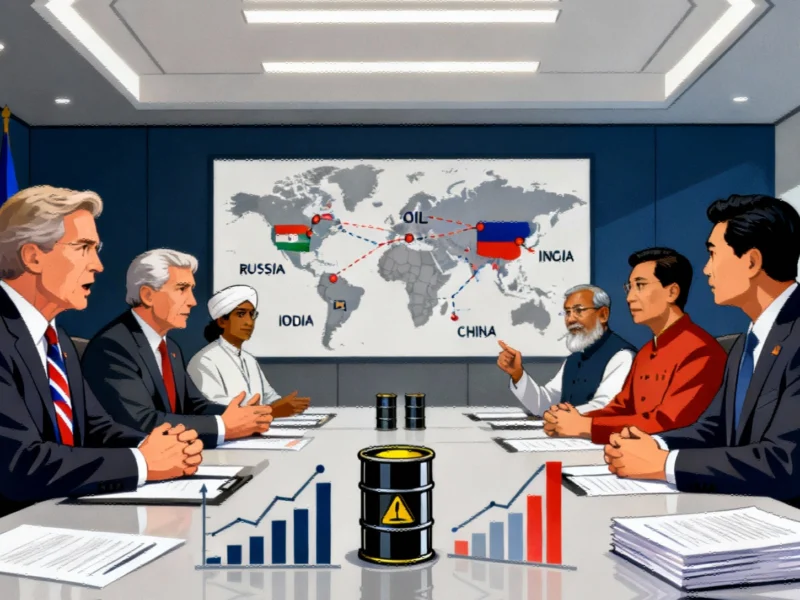The Tariff Impact on Holiday Toy Shopping
The 2025 holiday shopping season arrives amidst significant economic uncertainty, with fluctuating tariffs creating complex challenges for the toy industry. With approximately 80% of toys manufactured in China according to the Toy Association, this sector faces particular pressure from import duties and shifting trade policies. The situation represents a fascinating case study in supply chain adaptation and consumer behavior under economic stress.
While consumers may not encounter the empty shelves reminiscent of pandemic-era shortages, they will likely notice higher prices and potentially fewer items in their shopping carts. The interplay between manufacturing costs, retail strategies, and consumer spending power creates a dynamic landscape that both challenges and inspires innovation within the industry.
Production and Pricing Pressures
Toy manufacturers have navigated a “rollercoaster” year, as described by Peter Handstein, founder and CEO of Hape. The imposition of tariffs reaching as high as 145% on Chinese imports during spring forced companies to make difficult decisions about absorbing costs versus passing them to consumers. Many brands, including global players like Hape, have stocked warehouses strategically, including facilities in Canada for proximity to U.S. markets, to ensure holiday availability despite the challenging conditions.
Price increases have already manifested across the industry, with average toy prices rising approximately 5% by August according to industry data. Specific products show even steeper hikes: Crayola Finger Paint sets increased by $5, Melissa & Doug shopping carts jumped $12, and Micro Kickboard scooters saw a $30 price increase beginning in May. These adjustments reflect the complex economic uncertainty affecting multiple sectors simultaneously.
Consumer Behavior and Spending Patterns
Despite price pressures, consumer spending has remained relatively resilient throughout 2025. Mark Mathews of the National Retail Federation notes that shoppers have continued spending for major occasions including back-to-school seasons and holidays. However, Circana data suggests consumers plan to maintain similar gift budgets to 2024 with only a modest 3% increase, meaning they’ll likely purchase fewer items due to higher per-unit costs.
Sue Warfield of ASTRA observes that when families need to cut back, “it’s [on] things for themselves, not for the kids.” This dynamic may lead to fewer gifts per child rather than eliminated gift-giving entirely. The situation parallels broader market trends affecting consumer discretionary spending across multiple categories.
Innovation Under Economic Pressure
The tariff environment has created divergent responses regarding product development and innovation. Juli Lennett of Circana expresses concern that focus on supply chain management may divert resources from innovation, which traditionally drives new sales. Assaf Eshet of Clixo worries that price sensitivity may lead to “cheapening” of the industry as consumers and retailers prioritize lower-cost options.
However, some companies have turned challenges into opportunities. Solobo Toys transitioned from Chinese manufacturing to domestic 3D printing, developing their bestselling Emotion Friends line while avoiding tariff impacts. This pivot toward localized production represents one of many related innovations emerging from economic constraints.
Broader Economic Context
The toy industry’s challenges reflect wider economic patterns affecting multiple sectors. As consumers face higher prices across categories including food, housing, and healthcare, discretionary spending on toys competes with essential purchases. The Goldman Sachs estimate that consumers will eventually bear 55% of tariff-related cost increases underscores the distributed nature of these economic pressures.
These dynamics intersect with industry developments in technology and manufacturing, where companies across sectors are reevaluating supply chains and production strategies in response to trade policy shifts.
Strategic Adaptation and Future Outlook
Successful navigation of the current environment requires strategic flexibility from both manufacturers and retailers. Companies like Hape have absorbed some cost increases while strategically managing inventory to maintain customer relationships. Smaller enterprises like Solobo have reinvented their manufacturing approaches, leveraging technologies like 3D printing to create competitive advantages.
The situation highlights how recent technology adoption can transform business models under economic pressure. Similarly, the toy industry’s experience offers insights relevant to other sectors facing similar challenges, including the market trends affecting automotive and technology industries.
Practical Guidance for Holiday Shoppers
For consumers navigating the 2025 holiday season, several strategies can help maximize value:
- Shop early: While shortages aren’t anticipated, popular items may see limited availability
- Focus on quality: Given higher prices, prioritizing durable, engaging toys may provide better value than quantity
- Research alternatives: Domestic manufacturers and innovative newcomers may offer compelling options outside traditional brands
- Budget strategically: Assume similar total spending will yield fewer items, and plan gift lists accordingly
The 2025 toy shopping season represents a complex intersection of economic forces, supply chain dynamics, and consumer psychology. While challenges abound, the industry’s response demonstrates remarkable resilience and adaptability—qualities that will likely shape its evolution well beyond the current holiday season.
This article aggregates information from publicly available sources. All trademarks and copyrights belong to their respective owners.
Note: Featured image is for illustrative purposes only and does not represent any specific product, service, or entity mentioned in this article.



